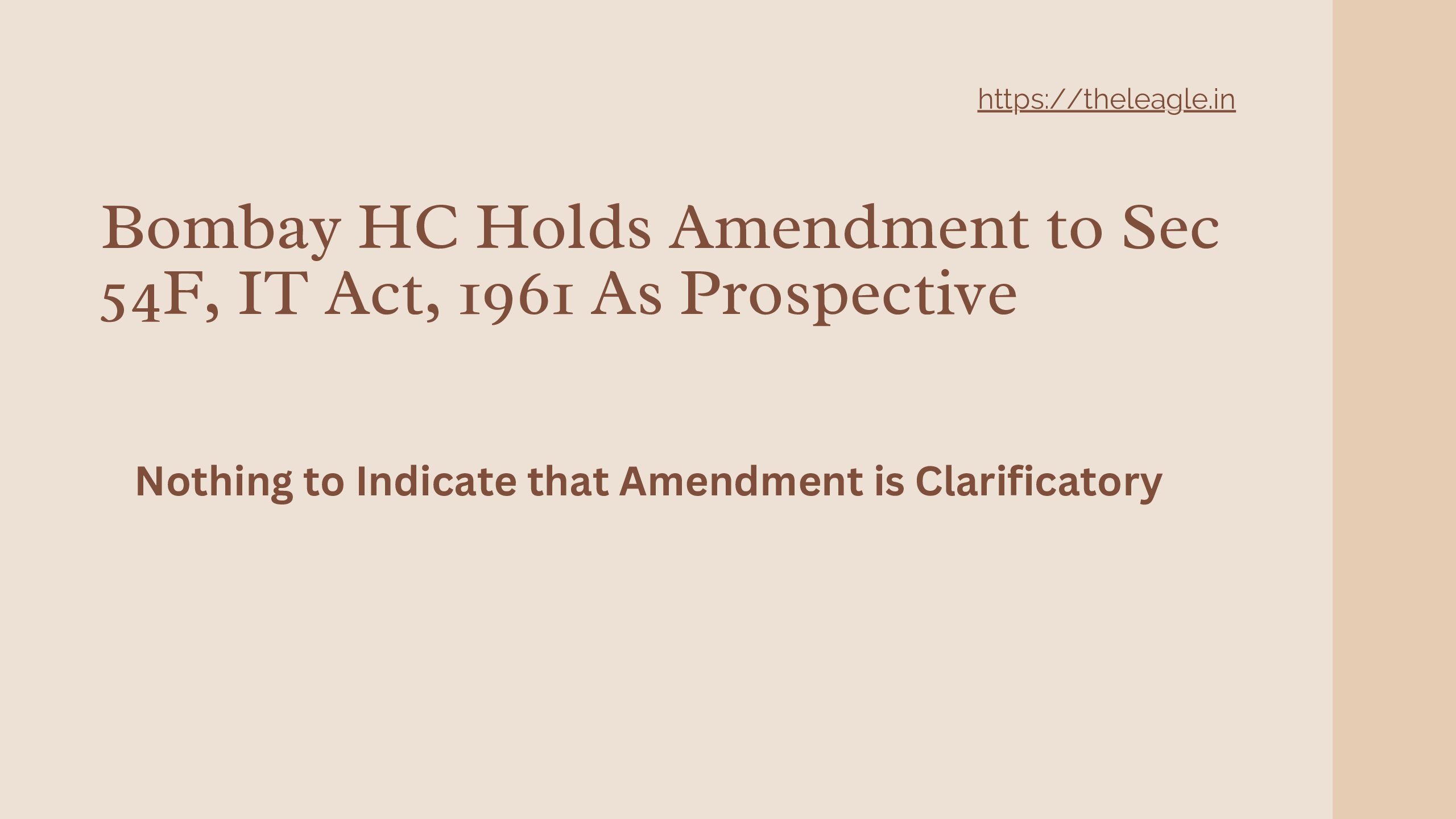In a lucid judgment[1], the Bombay High Court allowed petitioner to claim benefit of Section 54(F), IT Act, 1961 and held that the amendment made to the impugned provision by virtue of Finance Act, 2014 was prospective in nature.
Facts
The petitioner in the impugned case claimed benefit of Section 54(F), IT Act, 1961 on the ground that the capital gains from sale of residential property in India had been invested in another residential property in the United States of America. The petitioner’s claim was rejected by the Revenue Department on the ground that addition of the words ‘in India’ by way of amendment vide Finance Act, 2014 was retrospective in nature. And thus, the petitioner cannot claim benefit of Section 54(F) if the capital gains were invested in a residential property outside India.
The petitioner argued that the only condition that was required to be fulfilled at the time of relevant assessment year was that a new residential house should be purchased de hors any condition about the location of the new house. The petitioner further stated that when a particular provision was capable of more than one meaning, the interpretation that is in favor of the assessee must be adopted.
The State, on the other hand, argued that the amendment to Section 54(F) was clarificatory in nature and thus has retrospective effect. The State also adopted an innovative argument and stated that the requirement of ‘in India’ was in-built in the scheme of IT Act, 1961 by virtue of Section 5(2), IT Act, 1961, implying that the amendment to Section 54(F) only made express what was implied in the provision.
Bombay High Court Favors the Petitioner
The Bombay High Court identified the issue precisely and relied on precedents to clearly state that an amendment should be considered clarificatory only if the pre-amended provision was vague and ambiguous and it was impossible to read the provision unless the amendment was factored into it. Further as per the High Court, the clarification should not expand the scope of the provision.
Applying the above parameters to the amendment made to Section 54(F), the High Court concluded that the pre-amended Section 54 was not ambiguous, it expressly and specifically excluded the words ‘in India’. Thus, the amendment cannot be stated to be clarificatory in nature. The High Court further noted that interplay of Section 5(2) and Section 54(F) was such that the former was ‘subject to the provisions of this Act …’ and thus the former provision would always operate subject to other provisions of the IT Act, 1961 including Section 54(F). The High Court further reasoned that amended provision did not refer to Section 5(2) or even remotely suggest that it was a clarification and concluded that the amendment to Section 54(F) wherein the words ‘in India’ were added was prospective in nature.
Conclusion
The Bombay High Court in the impugned judgment was lucid and precise in its identification of the issue and applied the law in a straightforward and reasoned manner. The State’s argument of trying to link Section 5(2) with Section 54(F) was also suitably rebuffed, and rightly so.
[1] Hemant Dinkar Kandlur v Commissioner of Income Tax TS-545-HC-2023 BOM.
